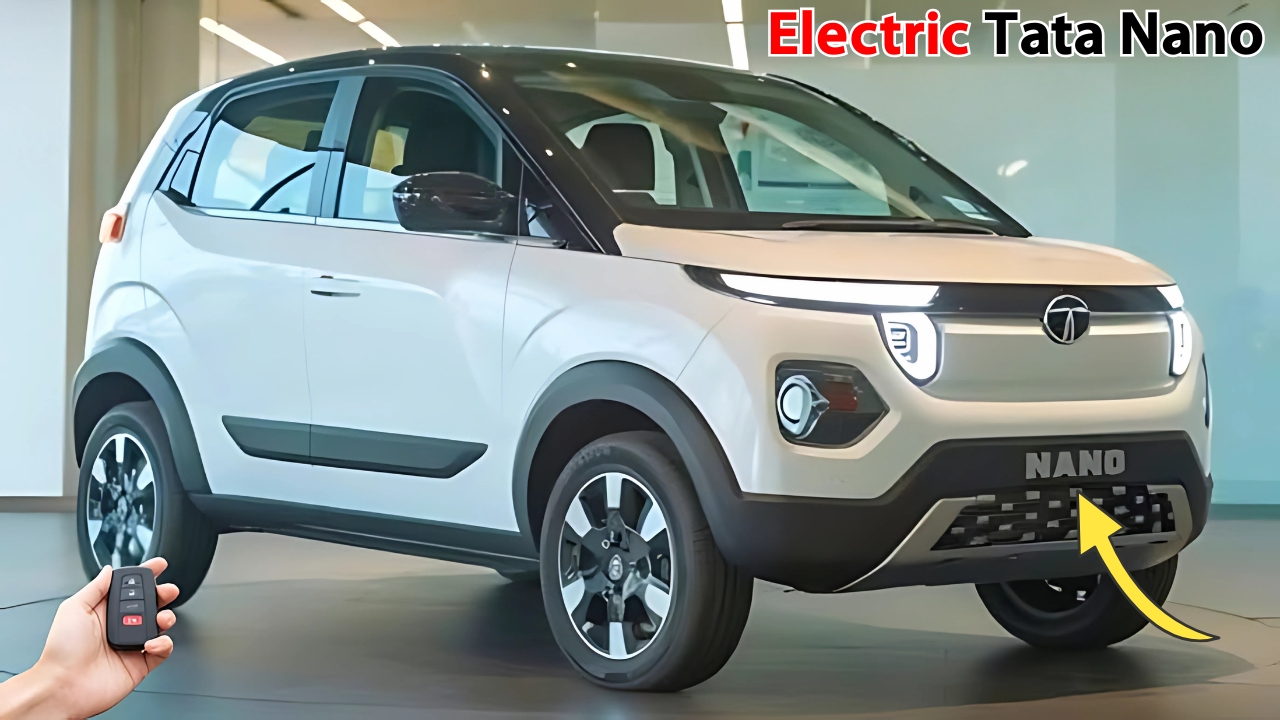Electric Tata Nano: The concept of an electric Tata Nano represents an intriguing possibility for affordable urban transportation.
This comprehensive exploration examines how such a vehicle could revolutionize city mobility by combining the original Nano’s space efficiency with modern electric technology.
Electric Tata Nano Design Evolution for Electric Era
An electric Nano would likely retain the original’s compact footprint while incorporating design elements that enhance aerodynamic efficiency.
The front end could feature a closed-off grille area, as electric vehicles don’t require traditional cooling intakes.
LED lighting throughout would reduce power consumption while providing modern aesthetics.
The tall, upright stance that maximized interior space in the original would remain advantageous, offering excellent visibility in congested traffic. Body panels might incorporate lightweight materials to offset battery weight, while maintaining the structural integrity necessary for safety.
Color options could include vibrant choices that appeal to environmentally conscious urban buyers.
The overall design philosophy would balance the minimalist approach that made the original Nano affordable with necessary updates for contemporary market expectations.
This evolution would need to maintain manufacturing simplicity while addressing modern safety and efficiency requirements.
Interior Space Optimization
The cabin layout would benefit from electric architecture’s packaging advantages. Without a traditional engine and transmission, designers could maximize passenger space within the compact footprint.
The flat floor enabled by battery placement would improve rear passenger comfort significantly.
Seating for four adults would remain the target, with improved cushioning compared to the original. Storage solutions would need creative thinking, with spaces carved out wherever possible.
The dashboard might embrace digital minimalism, with a simple display providing essential information without costly complexity.
Material choices would balance durability with sustainability, possibly incorporating recycled plastics and eco-friendly fabrics.
This approach would align with the environmental consciousness of electric vehicle buyers while maintaining affordability.
Electric Powertrain Possibilities
The electric motor would need to balance performance with efficiency. A modest power output around 40-50 horsepower would provide adequate urban performance while maximizing range from a smaller battery pack.
The instant torque characteristic of electric motors would enhance city driving, providing peppy acceleration from stops.
Battery capacity would represent the crucial cost-performance balance. A smaller pack around 15-20 kWh might provide 150-200 kilometers of range, sufficient for daily urban commuting.
This capacity would keep costs manageable while meeting most users’ daily needs.
Regenerative braking would prove particularly effective in stop-and-go traffic, extending range while reducing brake wear.
The simplified drivetrain would eliminate many mechanical components, potentially improving reliability and reducing maintenance requirements.
Charging Solutions and Infrastructure
Charging strategies would need to accommodate varied urban living situations. Standard household socket compatibility would prove essential for users without dedicated parking.
Faster AC charging capability could replenish the battery overnight, suitable for daily use patterns.
Public charging compatibility would expand usage possibilities, though the smaller battery would reduce charging time requirements.
The vehicle might incorporate innovative solutions like solar panels on the roof, providing supplementary charging during parking.
Battery thermal management would need cost-effective solutions suitable for India’s varied climate conditions.
Air cooling might suffice for the modest power requirements, avoiding expensive liquid cooling systems.
Urban Mobility Focus
An electric Nano would excel in congested city environments where its compact dimensions prove advantageous. The zero-emission operation would contribute to improving urban air quality, particularly important in heavily polluted cities.
Silent operation would reduce noise pollution in residential areas.
The turning radius would likely remain exceptional, crucial for navigating narrow streets and tight parking spaces. The elevated seating position would provide good visibility despite the vehicle’s small size.
These characteristics would make it ideal for congested urban environments.
Safety Considerations
Modern safety requirements would necessitate significant structural improvements over the original Nano. The electric version would need to meet contemporary crash test standards while maintaining affordability.
Strategic use of high-strength steel in critical areas could provide protection without excessive cost.
Electronic stability systems and ABS would likely become standard, as their cost has decreased significantly. Airbags for all occupants would address safety concerns that affected the original model’s reputation.
These additions would position an electric Nano as a safe urban mobility solution.
Technology Integration
Connectivity features would need careful consideration to balance functionality with cost. A simple smartphone integration system could provide navigation and entertainment without expensive built-in systems.
Basic telematics might enable remote monitoring of charging status and vehicle location.
Digital instrumentation would replace analog gauges, potentially reducing costs while providing clearer information display.
Over-the-air updates could ensure software improvements throughout the vehicle’s life, adding value for owners.
Manufacturing and Cost Strategies
Achieving affordability would require innovative manufacturing approaches. Simplified construction techniques and locally sourced components would prove essential.
The electric drivetrain’s inherent simplicity could offset battery costs through reduced mechanical complexity.
Government incentives for electric vehicles could significantly impact final pricing.
Volume production would prove crucial for achieving economies of scale. Strategic partnerships for battery supply might help control costs.
Market Potential and Target Buyers
An electric Nano would appeal to urban residents seeking affordable, efficient transportation. First-time car buyers conscious of environmental impact might find it particularly attractive.
The low operating costs would appeal to budget-conscious consumers and small business operators.
Ride-sharing applications could find the compact, efficient design ideal for city operations.
The vehicle might also serve as a second car for families needing additional urban mobility options.
Electric Tata Nano Conclusion
An electric Tata Nano could revolutionize affordable urban transportation by combining proven compact design with modern electric technology.
Through careful engineering focused on essential features and cost optimization, such a vehicle could make electric mobility accessible to broader market segments.
While challenges exist in balancing affordability with modern requirements, the potential for transforming urban transportation makes this concept worth pursuing.
The success would depend on achieving the right balance between simplicity, safety, and functionality while maintaining the accessibility that defined the original Nano’s vision.
